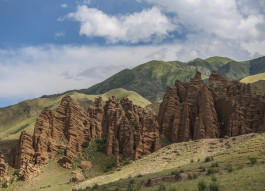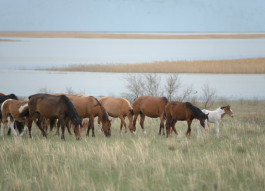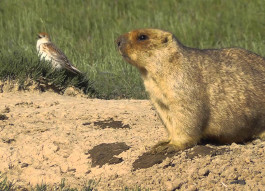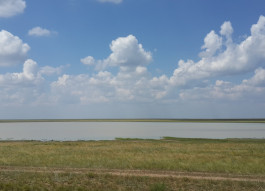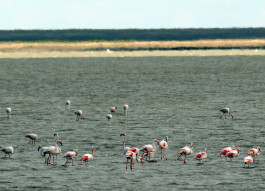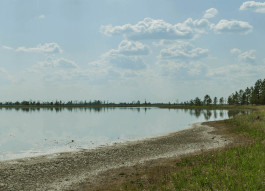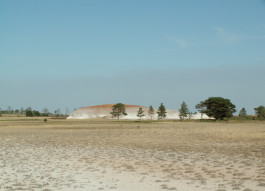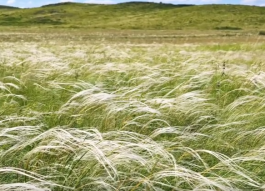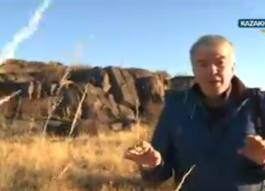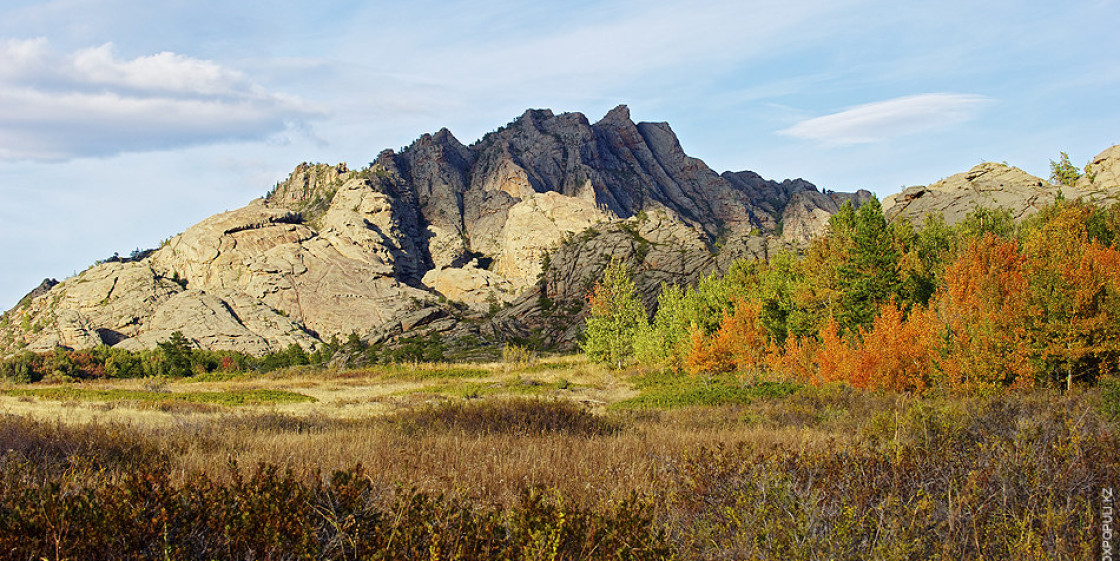
 Natural Heritage Monuments
Natural Heritage Monuments
53.7287464, 65.4789698
Saryarka - Steppe and Lakes of Northern Kazakhstan comprises two protected areas: Naurzum State Nature Reserve and Korgalzhyn State Nature Reserve totalling 450,344 ha. It features wetlands of outstanding importance for migratory water birds, including globally threatened species, among them the extremely rare Siberian white crane, the Dalmatian pelican, Pallas’s fish eagle, to name but a few.
These wetlands are key stopover points and crossroads on the Central Asian flyway of birds from Africa, Europe and South Asia to their breeding places in Western and Eastern Siberia. The 200,000 ha Central Asian steppe areas included in the property provide a valuable refuge for over half the species of the region’s steppe flora, a number of threatened bird species and the critically endangered Saiga antelope, formerly an abundant species much reduced by poaching. The property includes two groups of fresh and salt water lakes situated on a watershed between rivers flowing north to the Arctic and south into the Aral-Irtysh basin.
Values
Saryarka - Steppe and Lakes of Northern Kazakhstan protects substantial, largely undisturbed areas of Central Asian steppe and lakes in the Korgalzhyn and Naurzum State Nature Reserves. The property’s wetland areas are of outstanding importance for migratory waterbirds, including substantial populations of globally threatened species, as they are key stopover points and crossroads on the Central Asian flyways. The property’s steppe areas provide a valuable refuge for over half the species of the region’s steppe flora, a number of threatened bird species and the critically endangered Saiga antelope.
Criterion (ix): Ongoing biological and ecological processes: The property contains substantial areas of steppe and lakes with largely undisturbed associated biological and ecological processes. The seasonal dynamics of the hydrology, chemistry and biology of the lakes, with the diverse flora and fauna of the wetlands have evolved through complex wetting and drying cycles, and are of global significance and scientific interest.
The wetlands of Korgalzhyn and Naurzum State Nature Reserves are key stopover points and crossroads on the Central Asian migratory bird flyways and are of outstanding importance for migratory waterbirds on their way from Africa, Europe and South Asia to their breeding places in Western and Eastern Siberia. The property also contains over 200,000 ha of Central Asian steppe, more than half of which is pristine, and which is part of the temperate grassland biome.
Criterion (x): Biological diversity and threatened species: Korgalzhyn and Naurzum State Nature Reserves protect large areas of natural steppe and lake habitats that sustain a diverse range of Central Asian flora and fauna and support vast numbers of migratory birds, including substantial populations of many globally threatened species. The Korgalzhyn-Tengiz lakes provide feeding grounds for up to 15-16 million birds, including flocks of up to 2.5 million geese. They also support up to 350,000 nesting waterfowl, while the Naurzum lakes support up to 500,000 nesting waterfowl.
The property’s steppe areas provide a valuable refuge for over half the species of the region’s steppe flora, a number of threatened bird species and the critically endangered Saiga antelope, a once abundant species much reduced across its range by poaching pressure.
Integrity
The property contains high quality steppe and lake habitats that are essential for the long term conservation of the region’s biological diversity and each of its two component areas is of sufficient size to maintain associated biological and ecological processes. Korgalzhyn and Naurzum State Nature Reserves have benefited from long-term legal protection as strict nature reserves. Korgalzhyn is completely surrounded by a buffer zone, while Naurzum consists of three strictly protected areas, each surrounded by a buffer zone and linked together by an ecological corridor. The reserves are complementary in their values despite the 350 km distance between them. The property and the buffer zones, which are not part of the inscribed property, are adequately demarcated in the field.
Requirements for Protection and Management
The property has effective legal protection, is currently well managed and benefits from strong support and funding from the government and international partners. An integrated management plan has been developed for the property and the government has committed human and financial resources for its effective implementation. All land in the reserves is state owned and no permanent settlements are allowed. No uses of wild animals and plants are allowed and there is limited visitor access to the property. At present there are only few visitors to the property but tourism is likely to increase in the future and needs to be well planned and managed. Another key management priority is the maintenance of the hydrological regimes on which the viability of the property’s wetland ecosystems depend, in the case of Lake Tengiz primarily the inflows from the Nura River.
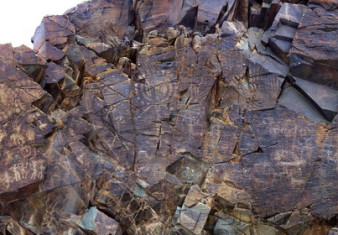
Set around the lush Tamgaly Gorge, amidst the vast, arid Chu-Ili mountains, is a remarkable concentration of some 5,000 petroglyphs (rock carvings) dating from the second half of the second millennium BC to the beginning of the 20th century.
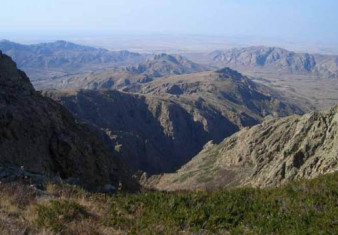
The cultural landscape of Ulytau is situated in the semi-desertic zone of Central Kazakhstan and it shows all its typical natural features: low mountains, conical-shaped hills, plains, river valleys and lakes.
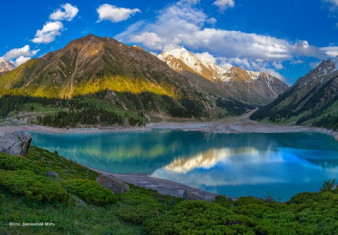
The natural object of nomination is located on the northern macrohillside of the ridge Trans-Ili Ala-Tau, which is the part of Northern Tyan Shan physical geographic province (Gvozdetskiy, Nikolaev, 1971).
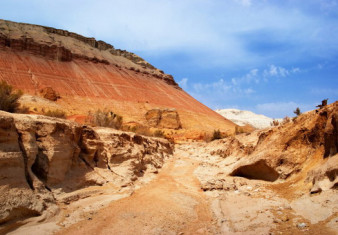
Altyn-Emel State National Nature Park is sprawled in the heart of Central Asia, in the valley of the Ili River, about 150 kilometers away from Almaty, Kazakhstan’s largest city.
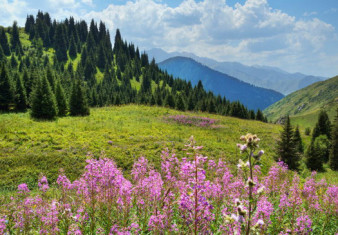
The Aksu-Zhabagly Nature Reserve is the oldest nature reserve in Central Asia. It is located in the southern province of the Republic of Kazakhstan.

Sauiskandyk is on the north-eastern slopes of Karatau in the Shielin District of the Kyzylorda Region, 60km East of Shieli, 15km north of Aksumbe Village. Research Status and Documentation.














